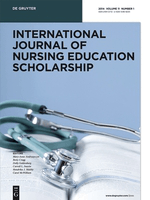
International Journal of Nursing Education Scholarship
Scope & Guideline
Advancing nursing education through innovative research.
Introduction
Aims and Scopes
- Nursing Education Innovations:
The journal emphasizes innovative educational strategies and methodologies, including simulation-based learning, flipped classrooms, and online learning challenges, to improve nursing education outcomes. - Research on Nursing Student Experiences:
A significant focus is placed on understanding nursing students' experiences, including their challenges, mental health, and perceptions of readiness for clinical practice. - Faculty Development and Support:
The journal explores themes related to faculty support, development, and the experiences of nurse educators, aiming to enhance teaching effectiveness and educational outcomes. - Interprofessional Education and Collaboration:
The impact of interprofessional education and partnerships in nursing education is a recurring theme, highlighting the importance of collaborative learning environments. - Quality of Care and Patient Safety:
Research on how nursing education influences patient safety culture and quality of care is a core area, particularly in the context of clinical training and practice.
Trending and Emerging
- Integration of Technology in Education:
The use of technology, including virtual simulations, e-learning, and digital tools, is increasingly prominent in nursing education research, reflecting the need for adaptability in teaching methods. - Mental Health and Well-being of Nursing Students:
There is a growing emphasis on understanding and addressing mental health issues among nursing students, particularly in light of the pressures introduced by the COVID-19 pandemic. - Competency-Based Education:
The trend towards competency-based education is emerging, with research focusing on developing and assessing specific competencies in nursing students, particularly in clinical settings. - Diversity and Inclusion in Nursing Education:
Increasing attention is being paid to diversity, equity, and inclusion within nursing education, addressing the experiences of underrepresented groups and the impact of cultural competence. - Impact of COVID-19 on Nursing Education:
Research examining the effects of the COVID-19 pandemic on nursing education, including adaptations in teaching and learning, has surged, highlighting the resilience and innovation of the field.
Declining or Waning
- Traditional Pedagogical Approaches:
There seems to be a waning interest in traditional teaching methods, such as lectures, as more innovative and interactive approaches gain prominence in nursing education research. - Standalone Research on Nursing Theory:
Research focusing solely on nursing theory without practical application or integration into teaching practices appears less frequent, indicating a shift towards more applied research. - Generalized Studies on Nursing Education:
Broad, non-specific studies that do not address particular challenges or innovations in nursing education are becoming less common, as researchers focus on more targeted investigations. - International Comparisons in Nursing Education:
While international perspectives remain important, there is a noticeable decrease in studies that solely compare nursing education systems without exploring specific implications for practice. - Traditional Assessment Methods:
Research focused on conventional assessment methods in nursing education is declining, with a growing preference for innovative assessment strategies that align with modern educational practices.
Similar Journals
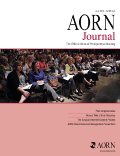
AORN JOURNAL
Fostering Growth in Medical and Surgical Nursing.AORN JOURNAL, a reputable publication in the field of Medical and Surgical Nursing, has been at the forefront of nursing education and practice since its inception in 1963. Published by WILEY, this peer-reviewed journal serves as an essential resource for nurses, educators, and healthcare professionals seeking to enhance their knowledge and skills in perioperative care. With an impressive ranking of 15th out of 26 in its category according to Scopus, and a Q2 rating in the 2023 category quartiles, the AORN JOURNAL consistently provides high-quality research, innovative practices, and evidence-based guidance. While currently not an open-access journal, it offers valuable insights and practical solutions to complex challenges in surgical settings, making it a crucial tool for advancing the nursing profession. The journal's commitment to fostering excellence in patient care continues to empower professionals and students alike, ensuring they stay at the leading edge of medical knowledge and practice.
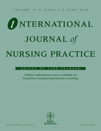
International Journal of Nursing Practice
Connecting academia and practice for a healthier tomorrow.International Journal of Nursing Practice, published by WILEY, is a premier academic journal dedicated to the field of nursing, with a keen emphasis on innovative nursing practices and advancements in healthcare. Established in 1995, the journal has successfully bridged a vital gap in nursing research and practice, featuring rigorous peer-reviewed articles that cater to both academic and clinical audiences. Rated as a Q1 journal in Nursing (miscellaneous) for 2023, it ranks at an impressive #29 out of 139 in General Nursing on Scopus, placing it firmly within the top 21% of its category. The journal serves as an essential resource for nursing professionals, researchers, and students alike, fostering evidence-based practices and enriching the global discourse in nursing. With an increasing focus on interdisciplinary work, the International Journal of Nursing Practice aims to enhance the quality of care provided to patients and support the continuous education of healthcare providers. Stay updated with cutting-edge research and share your contributions to this dynamic field!
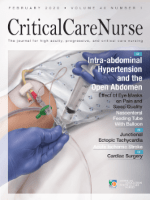
Critical Care Nurse
Pioneering Knowledge for Optimal Patient OutcomesCritical Care Nurse is a premier journal dedicated to advancing the field of critical care nursing, published by the American Association of Critical Care Nurses. With its consistent ranking in the Q1 category for Critical Care Nursing and impressive Scopus ranking at #8 out of 27, it serves as an essential resource for practitioners and researchers alike. The journal features innovative research, case studies, and reviews aimed at enhancing patient outcomes in critical care settings. As a significant contributor to nursing literature since 1980, Critical Care Nurse provides valuable insights and best practices that bridge the gap between theory and clinical practice, ensuring that professionals stay at the forefront of the ever-evolving healthcare landscape. While it is not an open-access journal, its high impact and relevance make it a critical read for those committed to excellence in critical care.
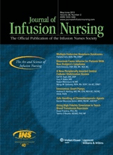
Journal of Infusion Nursing
Advancing infusion practices for better patient care.Journal of Infusion Nursing, published by Lippincott Williams & Wilkins, stands as a vital resource within the fields of nursing and healthcare. With a strong focus on infusion practices and patient care, this journal is committed to disseminating high-quality research and evidence-based practices that enhance nursing protocols and improve patient outcomes. As a quarterly publication, it is indexed in Scopus, ranking 32nd out of 139 in the general nursing category, with a commendable 77th percentile, highlighting its influence and relevance in the nursing community. Operating without open access, the journal is dedicated to covering a spectrum of topics from emerging techniques in infusion therapy to comprehensive reviews that inform clinical practice, making it an essential read for researchers, practitioners, and students alike. The Journal of Infusion Nursing not only facilitates knowledge sharing but also plays a crucial role in advancing the standards of nursing care in the United States and beyond.
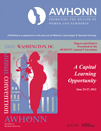
JOGNN-JOURNAL OF OBSTETRIC GYNECOLOGIC AND NEONATAL NURSING
Shaping the future of obstetric and neonatal nursing.JOGNN - Journal of Obstetric Gynecologic and Neonatal Nursing, published by Elsevier Science Inc, is a leading peer-reviewed journal dedicated to advancing the field of nursing in obstetrics, gynecology, and neonatal care. With a ISSN of 0884-2175 and an E-ISSN of 1552-6909, the journal has established itself as a pivotal platform since its inception in 1972, showcasing rigorous research and innovative practices that greatly enhance patient care and nursing education. As evidenced by its 2023 impact factor and impressive Scopus rankings—ranking in the top quartile (Q1) in Critical Care Nursing, Maternity and Midwifery, and Pediatrics, and Q2 in Medicine—it provides invaluable insights for healthcare professionals, researchers, and students alike. The journal’s commitment to high-quality, evidence-based articles reflects its critical role in shaping contemporary nursing practices and informing best practices in maternal and neonatal health. While currently not an Open Access journal, the information disseminated through JOGNN remains vital for those striving to inform their practice and improve patient outcomes worldwide.

Revista Rol de Enfermeria
Elevating Nursing Knowledge for a Healthier TomorrowRevista Rol de Enfermeria, published by EDICIONES ROL S L, is a distinguished peer-reviewed journal that has been a cornerstone of nursing knowledge and practice since its inception in 1980. With a specific focus on the field of nursing and healthcare, this journal serves as a vital platform for researchers, clinicians, and educators to disseminate their findings, enhance professional practices, and support the development of evidence-based nursing care. Although its coverage in Scopus has been discontinued as of 2016, the journal has maintained an essential role in the nursing community, contributing to the advancement of general medicine as evidenced by its ranking in Scopus at #679 out of 862, placing it within the 21st percentile. While Revista Rol de Enfermeria does not currently offer an open access model, its historical significance and thematic relevance make it a valuable resource for professionals seeking to stay informed about the latest developments in nursing research and education. Situated in Barcelona, Spain, it continues to reflect the dynamic evolution of nursing practice across diverse healthcare landscapes.
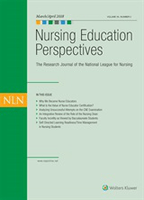
Nursing Education Perspectives
Shaping the Next Generation of Nursing ProfessionalsNursing Education Perspectives is an esteemed peer-reviewed journal published by LIPPINCOTT WILLIAMS & WILKINS, focusing on the vital intersection of education and nursing practice. With an ISSN of 1536-5026 and an E-ISSN of 1943-4685, this journal has been serving the nursing education community since its inception in 2002 and will continue to do so until 2024. In 2023, it achieved a commendable Q2 ranking in Nursing and Q3 in both Education and Miscellaneous Medicine, reflecting its significant contribution to the academic landscape. Although it follows a traditional access model, the journal consistently aims to provide high-quality research, innovative pedagogical strategies, and best practices that can enhance nursing education globally. Given its position within the 49th percentile for General Nursing and Social Sciences, Nursing Education Perspectives is an essential resource for researchers, educators, and practitioners dedicated to advancing nursing training and education.
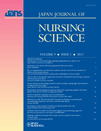
Japan Journal of Nursing Science
Elevating Standards in Nursing Education and PracticeJapan Journal of Nursing Science, published by WILEY, serves as a pivotal resource in the field of nursing, focusing on innovative research and theoretical developments that enhance nursing science practices. With an ISSN of 1742-7932, this journal has established itself as a reputable platform, reflected in its 2023 rankings, which place it in the Q2 category for both Medicine (miscellaneous) and Research and Theory. Covering a broad range of topics crucial to the advancement of nursing, the journal provides researchers, professionals, and students access to high-quality studies, methodologies, and discussions that shape contemporary nursing practices and policies. Though not an Open Access journal, it contributes significantly to the academic discourse and research community, with emphasis on fostering evidence-based practices and promoting excellence in nursing education and healthcare delivery. With a cumulative publishing history from 2006 to the present, the Japan Journal of Nursing Science is committed to disseminating vital knowledge that enriches the nursing profession and improves patient care.

Journal of Korean Academy of Nursing
Fostering Collaboration for a Healthier Tomorrow.The Journal of Korean Academy of Nursing, published by the Korean Society of Nursing Science, is a leading peer-reviewed journal dedicated to advancing the field of nursing research and practice. Established in 2008, this journal serves as a platform for innovative studies and discussions that address the challenges and developments in nursing. With an impressive 2023 category quartile ranking of Q2 in the field of Nursing and General Nursing, it ranks #58 out of 139 journals, placing it in the 58th percentile—a testament to its scholarly impact. Focused primarily on the nuances of nursing in South Korea and beyond, the journal fosters collaboration among various healthcare professionals and researchers, striving to improve nursing practices through empirical research and evidence-based insights. The journal is accessible to those seeking to engage with the latest findings and trends in nursing, further solidifying its role as an essential resource for researchers, practitioners, and students alike. For access and further details, please refer to the journal's homepage.
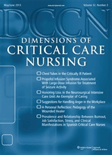
Dimensions of Critical Care Nursing
Pioneering Research for Enhanced Emergency Nursing PracticesDimensions of Critical Care Nursing, published by Lippincott Williams & Wilkins, is a premier journal dedicated to advancing the knowledge and practices within the fields of critical care and emergency nursing. With a distinguished history dating back to 1982, this journal plays a vital role in disseminating cutting-edge research, clinical advancements, and educational resources aimed at enhancing patient care in high-stakes environments. The journal is ranked in the Q2 quartile for both Critical Care Nursing and Emergency Nursing, reflecting its significant impact on the nursing field, with Scopus rankings placing it at #11 in Critical Care Nursing and #14 in Emergency Nursing. Targeting a multidisciplinary audience of researchers, clinicians, and students, the journal serves as a critical platform for discussions surrounding innovative patient care strategies, evidence-based practices, and emerging trends in critical nursing. Although it is not an open-access journal, it provides valuable insights that are essential for shaping the future of nursing practice. Stay informed on the latest research and contribute to the evolving landscape of critical and emergency care through Dimensions of Critical Care Nursing.